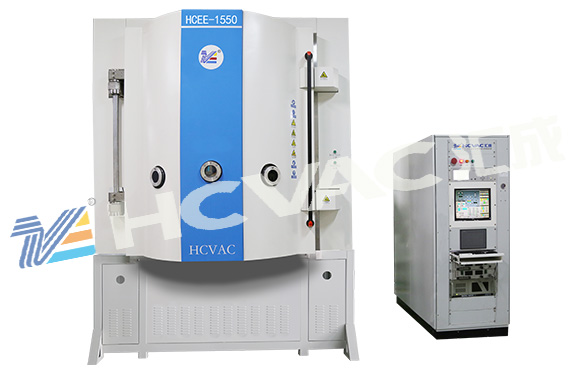We often see various electronic products with gorgeous appearances in our daily life. Many people are curious about how the gorgeous appearance is made. In fact, it uses an optical coating machine to coat one or more layers of film on the surface of the component using physical methods. Through the process, optical coating changes the optical properties of the surface of electronic products to meet market demand. Optical coating machines not only coat electronic products, but are also widely used in solar cells, projectors, LEDs, optical pickups, lenses, etc., with a wide range of applications. The following is an introduction to the structure and principle of the optical coating machine. I hope it can help you:

The optical coating machine consists of a vacuum system, an evaporation system, a cooling system and an electrical system. The vacuum system consists of a vacuum tank and an exhaust system. The vacuum tank is the main body of the coating machine. The coating process is completed in the vacuum tank. The vacuum tank and the exhaust system are connected through a connecting valve. In order to prevent the influence of air molecules on sputtered ions and improve the quality of the film layer, the optical components and ion source must be placed in a vacuum environment during work. The exhaust system is mainly composed of mechanical pumps, Roots pumps and vacuum pumps, which are responsible for discharging the gas in the vacuum tank and forming a vacuum environment in the tank. The evaporation system mainly refers to the film forming device part. There are many kinds of film forming devices in the coating machine, such as resistance heating, electron gun evaporation, magnetron sputtering, radio frequency sputtering, ion plating, etc.
The
optical coating machine coats thin films on optical components through vacuum sputtering, thereby changing the reflectivity and transmittance of the components to incident light. At the same time, in order to reduce the reflection loss on the component surface as much as possible and improve the imaging quality, multi-layer films are often coated. After the optical element is coated, the light is reflected and transmitted multiple times on the surface of the multi-layer film, forming multi-beam interference. By controlling the thickness and refractive index of the film layer, different intensity distributions can be obtained. This principle can be used to manufacture polarizing reflective films, color spectroscopic films, luminescent films and interference filters to meet more complex needs.



